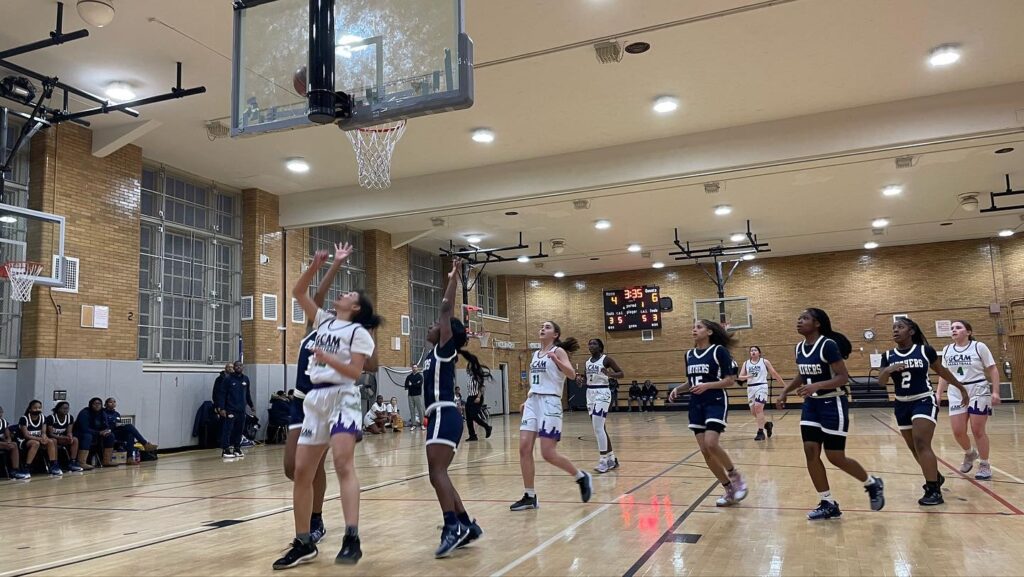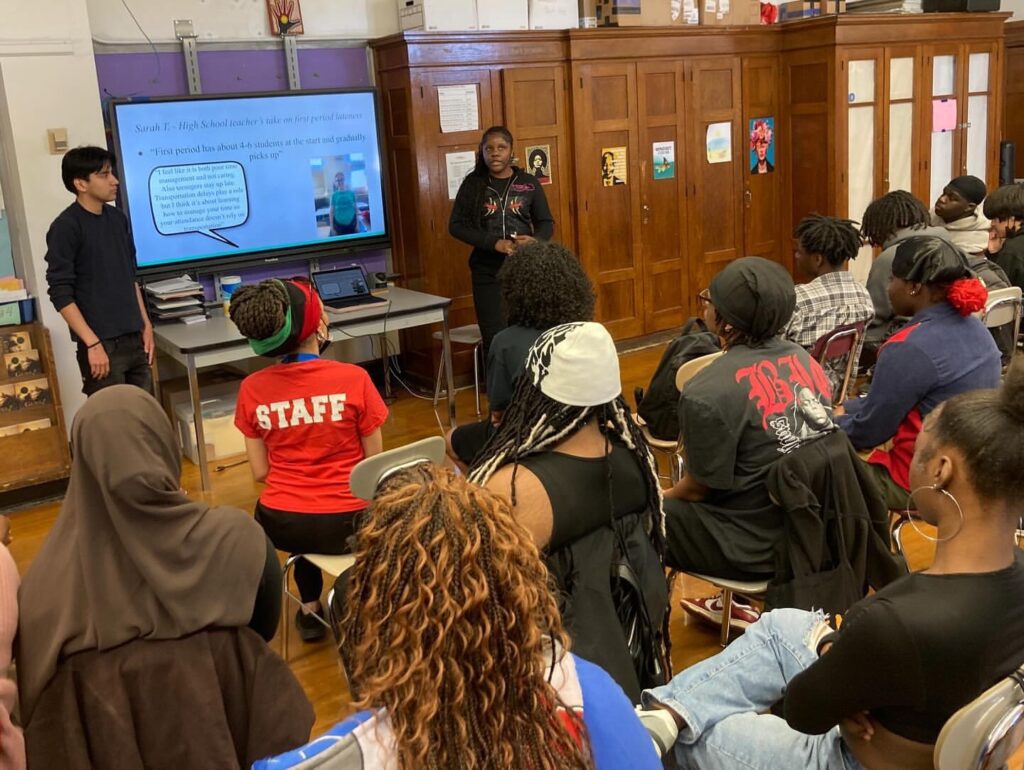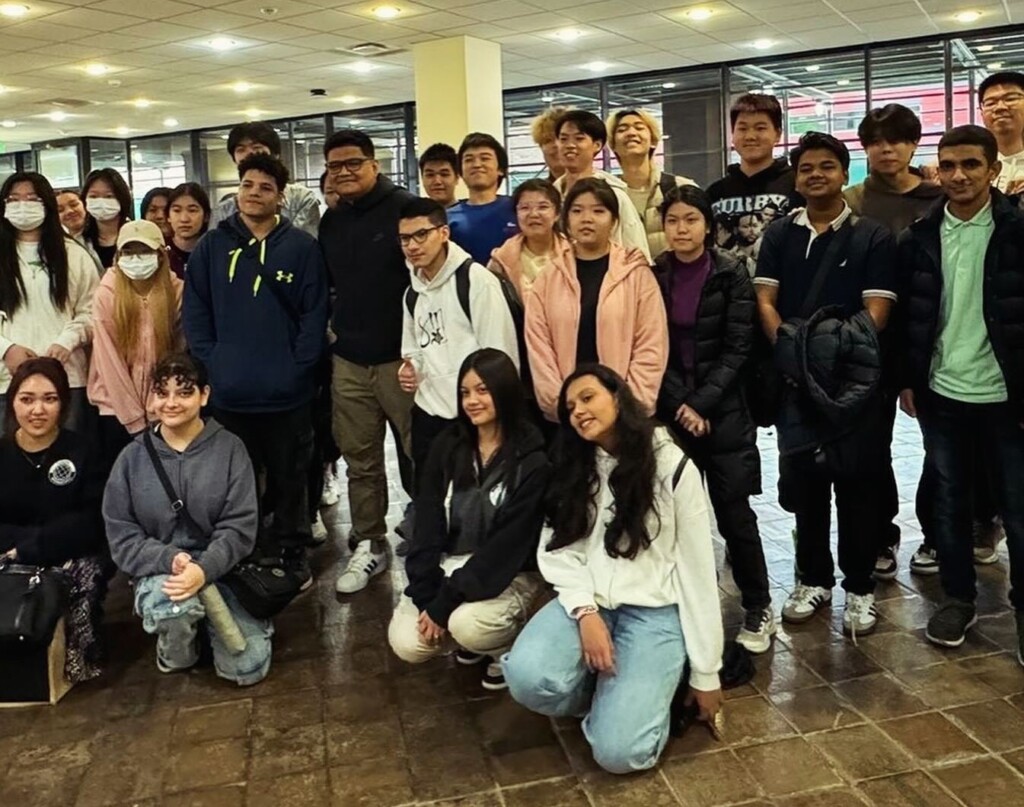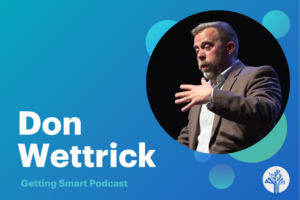Transforming Public Education: A Blueprint for Learner-Centered Change
Key Points
-
Schools can achieve transformative change by adopting learner-centered practices that integrate real-world projects and internships, fostering student engagement and community impact.
-
Collaboration and technology are crucial in supporting personalized learning, ensuring equitable access, and empowering educators to innovate and inspire.

By Alan Cheng, High School Superintendent, NYC Public Schools
Having spent two decades in New York City Public Schools, including six years leading 50 high schools in the Consortium, Internationals, NYC Outward Bound Schools portfolio, I’ve witnessed the transformative power of a personalized, student-focused pedagogy. Our schools, which cater to a diverse student body of approximately 22,000, have proven that the H3 learning ecosystem is not just a theoretical concept, but only possible practical and essential model for the future of public education.
The Foundation of Our Work
Public education today stands at a crossroads. We must move beyond compliance-driven, traditional education (H1) and incremental improvements (H2) toward an H3 learning ecosystem. This paradigm, which we have successfully implemented in our schools, fully embraces student agency, competency-based progressions, and equitable access to meaningful, future-ready opportunities. The success of this approach in our schools is a beacon of hope for the future of public education.
The schools I oversee belong to unique networks, including the New York State Performance Standards Consortium, the Internationals Network for Public Schools, and New York City Outward Bound. Our schools exemplify this H3 vision by prioritizing authentic, real-world learning experiences, robust project- and performance-based assessments, and competency-driven progression. Students craft comprehensive portfolios that articulate their growth through tangible skills and competencies rather than grades alone.
For example, at Bronx International High School, teachers integrate language development with subject content, supporting newcomer immigrants from over 40 countries. In one case, a group of students from various linguistic backgrounds collaborated on a climate change project. They analyzed local temperature data in science class, wrote persuasive essays in English, and created infographics in math. The final presentation—delivered in multiple languages—demonstrated their understanding and empowered them to share insights with their community.
Our students receive a comprehensive and rigorous academic experience while feeling challenged and supported. As a result, our English Language Learners graduate high school at rates 15% above citywide averages, and students with IEPs exceed averages by nearly 20%, evidence that personalized, competency-based education yields powerful outcomes.
Designing Schools Without Walls
One of our most innovative initiatives is A School Without Walls, which was launched in 2021. This small, intentionally designed school empowers students to direct their learning through passion-driven projects. By the 10th grade, over half of the curriculum is student-designed. Projects range from redesigning local skate parks to improving access to multilingual resources at community food banks. Teachers are facilitators, guiding students to connect their interests with rigorous academic standards and real-world impact. School Without Walls has significantly increased student engagement and ownership of learning, leading to a more personalized and effective education experience.
Consider a student with a passion for architecture and urban design. He took on a project to revamp a rundown skate park in his neighborhood. Using geometry and CAD software, he designed new ramps and rails, collaborating with a local architect. His research extended to zoning regulations, necessitating his attendance at city council meetings. By the end, he had a comprehensive proposal, lauded by both the city council and community members. This wasn’t just a school project—it was real-world problem-solving with a tangible impact, a testament to the power of learner-centered education.
Our approach to fostering student agency begins early, with 9th-grade students engaging in interdisciplinary classes and design-thinking workshops. These initiatives encourage students to envision their ideal learning experiences, nurturing a mindset of ownership and creativity. By the time they graduate, students will have completed internships and apprenticeships that bridge school with community and career, a testament to the value of these early experiences.
Internships as Cornerstones of Learning
As part of NYC’s FutureReadyNYC initiative, we are expanding work-based learning experiences that align with emerging industries, ensuring that students graduate with the skills and credentials needed for high-demand careers. Schools in our network are piloting career pathways in sectors such as healthcare, technology, and sustainability—empowering students with internships that directly support the city’s workforce development goals.
Many schools offer dozens of internship opportunities and have robust partnerships where students can early multiple college credits each semester. At City-As-School, students choose from an ever-changing catalog of over 100 internships every quarter. Students might work on urban farming projects or apprentice with historical preservation carpenters. These experiences provide context for classroom learning while building confidence and career readiness.
One remarkable story comes from a student who interned at a veterinary clinic. She started with basic tasks like cleaning animal enclosures but quickly became interested in the science behind veterinary care. With guidance from her mentor, she developed a project focused on feline diabetes. She researched treatment methods, analyzed lab data, and even assisted in crafting care plans for pet owners. Her final presentation, aligned with biology standards, not only earned her high marks but also inspired her to pursue a career in veterinary medicine.
Advisors are crucial in helping students connect their experiences with academic goals, ensuring a holistic and meaningful learning journey. They guide students in reflecting on how their internships align with their personal growth and career aspirations at every step. This support system fosters a culture of collaboration and shared responsibility, ensuring that each student’s learning journey is personalized and meaningful, and that their personal growth and career aspirations are fully supported.
Building a Culture of Collaboration

Transformative change isn’t just about innovative programs; it’s about fostering a culture of collaboration. At Manhattan International High School, teams of five to six teachers work closely with small groups of students, ensuring individualized attention and cohesive interdisciplinary learning. This team-based approach extends to professional development, where educators share strategies and successes across schools. This collaborative culture, which we have fostered in our schools, is what sets our schools apart, creating a sense of community and shared purpose among educators and students alike.
We’ve also fostered partnerships with organizations like Bank Street Graduate School of Education and Big Picture Learning. These collaborations provide teachers with resources and training to implement cutting-edge practices. By investing in adult learning, we’re building a pipeline of educators who are not only skilled but also inspired. One of the key things we’ve done is make a concerted effort to hire alums to work in our schools, employing over 200 graduates across our 50 schools. We also run an early career teacher fellowship to ensure that great educators make it through the difficult first few years of their teaching careers, and we just started a principal certification program with Brooklyn College to grow and develop our future school leaders.
Embracing Technology and Innovation
Technology plays a pivotal role in our learner-centered approach. Through partnerships with PlayLab, we’ve co-designed AI tools to enhance teaching and learning. Teachers use these tools to differentiate instruction, while students access personalized resources that support their growth. For example, a teacher from the Bronx Lab School trained and designed an app called the Dynamic Teaching Toolbox that engages teachers in a dialogue about what they’re currently teaching and helps the teacher integrate student-centered protocols from EL Education, Center for Learning and Education Equity, and National School Reform Faculty.
Our district math coach Varuni designed a tool called Maryam, a student-facing app intended to help students improve their math metacognition. The app gently and intentionally pushes students’ thinking by asking them different kinds of questions like how you make sense of problems, how you plan out the steps to your solutions, how you solve the steps in your solutions, or how you check that your answers are accurate or sensible. The assistant provides tailored feedback, always asking guiding questions rather than simply correcting errors. The goal is to push students about their assumptions and blind spots, developing their critical thinking skills. Using such innovative tools not only enhances the learning experience but also fosters a culture of adaptability and continuous improvement.
What sets these tools apart is the emphasis on co-creation. Teachers participate in the design process, ensuring that tools reflect their unique needs and values. In turn, our teachers feel much greater ownership and responsibility for continuing to modify and improve the tools based on student feedback and their own learning.
Addressing Challenges Head-On

Scaling innovation in large urban districts brings inherent challenges, including rigid funding structures, entrenched traditional assessment practices, and the need for widespread buy-in. We’ve proactively navigated these by advocating for policy shifts, securing flexible funding sources, and engaging diverse stakeholders early in the change process. For instance, when transitioning away from traditional standardized assessments, we encountered resistance due to concerns about accountability. By showcasing successes from more experienced schools in the network, we demonstrated the effectiveness of authentic, competency-based assessments, securing broader support from educators, parents, and policymakers. Continuous, transparent communication and highlighting early successes have been crucial to maintaining momentum and building trust.
Lessons from the Margins
Much of our success stems from designing for the margins. Our schools serve students facing extraordinary challenges, from housing insecurity to interrupted formal education. Over 20% of the students in our district are in temporary housing, and nearly 40% are current or recent English Language Learners. Yet, by prioritizing equity and inclusion, we’ve uncovered strategies that benefit all learners. For example, in all of our schools, students’ native languages are integrated into project-based learning, enhancing both engagement and academic outcomes.
One particularly moving example comes from a student who arrived in New York as a refugee, speaking little English. She explored climate change through the school’s project-based learning model by studying its effects on her home country. She created a multimedia presentation combining photos, personal narratives, and scientific data. Her work helped her develop language skills and gave her a platform to share her story and advocate for environmental action.
This focus on the margins has yielded results. Our graduation rates and college enrollment rates consistently surpass city averages, particularly for historically underserved groups like English language learners and students with IEPs.
Scaling Innovation
Scaling learner-centered innovation across a large district requires intentional structures and robust networks, which have significantly enhanced community engagement and civic outcomes. Connecting educators through citywide professional development has increased parent involvement and strengthened local partnerships, and more students actively participating in community improvement initiatives across a large district requires intentional structures and robust networks.
Programs like the Showcase Schools Initiative highlighted best practices, allowing schools to learn from one another. Claremont International hosted a city-wide professional development day, where educators observed its interdisciplinary approach to teaching climate change. Similarly, Brooklyn International organized workshops for teachers on integrating internships with academic standards, creating a ripple effect of shared expertise.
We’ve also invested in professional learning communities that foster ongoing dialogue among educators. Conferences, such as the Deeper Learning Network and Big Picture Learning events, provide platforms for our teachers to exchange ideas with national and international peers. We’ve partnered with the Center for Public Research and Leadership at Columbia Law School to document how our district is intentionally designed to promote collaborative learning, improvement, and innovation. By showcasing the work of our schools, we’re amplifying the impact of learner-centered practices beyond our district.
Family engagement has also been a critical lever in this work, aligning with NYC Chancellor Avilés-Ramos’s vision for stronger school-community partnerships. Schools in our network host multilingual family workshops, offer leadership opportunities for parents, and create pathways for deeper participation in school decision-making.
My role as superintendent is to create conditions for continuous innovation. This means advocating for flexible funding, aligning accountability systems with learner-centered goals, and celebrating the incredible work happening in our schools. By convening networks of schools and organizations, we’re accelerating the spread of transformative practices.
A Call to Action
Our work proves that learner-centered education is not a luxury but a necessity. It’s a model that meets students where they are, nurtures their potential, and prepares them for an ever-changing world. Public education holds extraordinary potential if we embrace the H3 vision at scale.
To achieve this:
The work of our schools aligns closely with the NYSED Portrait of a Graduate, which envisions students developing critical thinking, collaboration, civic responsibility, and adaptability. Our emphasis on project-based learning, internships, and multilingual integration equips students with these competencies, ensuring they are not only college- and career-ready but also engaged citizens prepared to shape their communities.
- District Leaders must adopt policies and allocate resources that empower schools to implement authentic, learner-centered education.
- Educators should integrate real-world, student-driven projects into daily practice, shifting the classroom experience from passive learning to active problem-solving.
- Policymakers need to shift accountability frameworks around meaningful demonstrations of learning, moving beyond standardized assessments toward authentic measures of student growth and preparedness.
By embracing H3 principles, we transform schools into hubs of community engagement, civic agency, and future readiness. Let’s use this blueprint as our guide and place students where they belong—at the center of everything we do.

Alan Cheng serves as a high school superintendent in New York City, where he leads a portfolio of 50 schools, including members of the NY Performance Standards Consortium, Internationals Network, and NYC Outward Bound. These schools are nationally recognized for advancing performance-based assessment, multilingual inclusion, and learner-centered innovation. Alan’s leadership focuses on transforming large urban systems to equitably support deeper learning, student agency, and future readiness at scale. A former high school principal and U.S. Senate education policy fellow, Alan brings a systems lens to the work of instructional leadership, educator development, and cross-sector collaboration. He is especially committed to creating trust-based, relational structures that enable continuous learning for both students and adults. Alan holds a doctorate in Adult Development and Education Leadership from Teachers College, Columbia University.







0 Comments
Leave a Comment
Your email address will not be published. All fields are required.